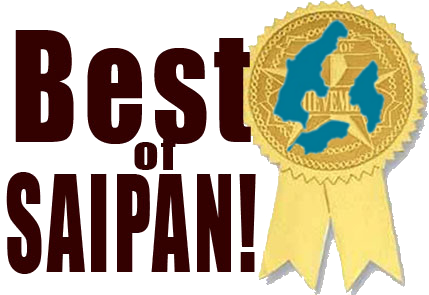Saipan Factory Facts!
The End of an Era
The Garment Factory Era on Saipan has come to an end. From a high of 36 factories back in the mid to late 1990s, the last factory closed on January 15, 2009.
Gone are the throngs of Chinese girls walking arm in arm along Beach road. Gone are the vans shuttling the girls from their barracks to shop at and congregate at Fiesta Mall, outside Sunleader Supermarket, San Jose Mart or 99 Cents Store. The girls riding their bicycles to and from work, while holding umbrellas to shield themselves from the sun are few and far between.
But while the closures are beyond debate, opinions about the factories themselves, what they represented, and what their ultimate legacy will be in the ongoing story of Saipan rages on.
There are those who saw them as a good thing, a boon to the local economy, providing jobs and tax revenue. Others see them as a blight, a blemish on the reputation and perception of Saipan, CNMI.
Here are some of the facts of the rise and fall of the garment industry from 1983 - 2009 on the island of Saipan, CNMI, USA.
Timeline
1983
 The first garment factory, Commonwealth Garment Factory, Inc. opens on Saipan on October, 14, 1983.
The first garment factory, Commonwealth Garment Factory, Inc. opens on Saipan on October, 14, 1983.
 quotas allowed for a maximum of 15,727 garment factory workers on the island of Saipan
quotas allowed for a maximum of 15,727 garment factory workers on the island of Saipan
 90% of these are young women between the ages of 18 and 30
90% of these are young women between the ages of 18 and 30
 Garment factories help the CNMI economy by paying "user fees" and taxes.
Garment factories help the CNMI economy by paying "user fees" and taxes.
Similarly, an economic study funded by the US Department of the Interior's Office of Insular Affairs (OIA) revealed that at an average of $1,800 income taxes per person, the apparel manufacturing industry which currently employs about 15,000 foreign workers, contributes $27 million in income taxes alone.
Aside from contributing to the public coffers through income taxes, each garment worker spends on consumer products. Based on foreign workers' average $50 weekly expenditure, all 15,000 garment workers cumulatively spend $750,000.
Acting Labor Secretary Dean O. Tenorio said yesterday that the ongoing headcount of garment workers on island was aimed primarily at counter-checking government records with that of the garment industry and ensuring that the industry in general was within its ceiling of 15,727 nonresident workers.
The report said that from $39.3 million in fiscal years 98-99, users fee collection fell to $38.6 million in fiscal years 99-2000. The revenue further spiraled down in 2000-2001 when DoF [Department of Finance] collected only $35.8 million and $30.9 million in 2001-2002. In fiscal years 2002-2003, DoF collected only $29.6 million. To date, DoF has collected $14.8 million in user fees from October 2003 to March 2004.
CNMI used to have 34 garment factories, all located on Saipan. The garment industry used to contribute some $60 million in direct taxes a year to the local government.
1997
Garment exports took a major leap in 1997, increasing by $235 million from $513.7 million in 1996 to $748.6 million.
1998
The Saipan garment manufacturing industry exported close to $1 billion worth of apparel products to the United States in 1998. Tribune: By end-1998, apparel exports from Saipan totaled $994.6, marking a $246 million increase from year-ago figures.
 In fiscal year 1998, user fee collection was about $37.8 million
In fiscal year 1998, user fee collection was about $37.8 million
1999
 The Quarterly Economic Review prepared by the Central Statistics Division of the commerce department noted that garment exports amounted $267.6 million in January-March 1999. The figure fell to $258 million the following period.
The Quarterly Economic Review prepared by the Central Statistics Division of the commerce department noted that garment exports amounted $267.6 million in January-March 1999. The figure fell to $258 million the following period.
 At least 22 garment factories on Saipan were named defendants in the class action suit filed in the District Court here. It is the biggest court action facing the local garment industry. Among the companies named in the suits were The Gap, Cutter & Buck, Dayton Hudson, J. Crew Group, J.C. Penny, Sears Roebuck & Co., The Limited, Oshkosh B'Gosh, The Gymboree, the Associated Merchandising Corp., the May Company, Lane Bryant, Wal-Mart, Tommy Hilfiger, and the Warnaco Group. Major buyers of Saipan-made apparel products include the Gap, Liz Claiborne, Tommy Hilfiger and Ralph Lauren's Polo line.
At least 22 garment factories on Saipan were named defendants in the class action suit filed in the District Court here. It is the biggest court action facing the local garment industry. Among the companies named in the suits were The Gap, Cutter & Buck, Dayton Hudson, J. Crew Group, J.C. Penny, Sears Roebuck & Co., The Limited, Oshkosh B'Gosh, The Gymboree, the Associated Merchandising Corp., the May Company, Lane Bryant, Wal-Mart, Tommy Hilfiger, and the Warnaco Group. Major buyers of Saipan-made apparel products include the Gap, Liz Claiborne, Tommy Hilfiger and Ralph Lauren's Polo line.
 Friday, January 15, 1999
Lawsuit vs. garment firms alleges labor violations
Friday, January 15, 1999
Lawsuit vs. garment firms alleges labor violationsBy Flor B. Pamintuan
Twenty three foreign garment workers yesterday filed a civil action in federal court against 22 local garment manufacturers alleging violations of federal and local labor laws.
The suit, filed by Timothy Skinner, resident attorney for the law firms of Milberg, Weiss, Bershad, Hynes & Lerach and Altshuler, Berzon, Nussbaum, Berzon and Rubin, alleged violations of the federal Fair Labor Standards Act, the CNMI Nonresident Workers Act, the CNMI Minimum Wage and Hour Act and other laws for nonpayment of overtime premiums and minimum wage.
The garment firms produce clothing for some of the nation's leading fashion companies and clothing retail outlets.
The garment workers were not identified for fear that if their true identity is revealed, they will face physical violence, immediate deportation to China or their country of origin, likely arrest upon arrival in China or their country of origin and an order by China and other authorities accelerating the repayment of debt incurred for recruitment fees.
They also fear that their families may face similar threats of physical and economic retaliation if their identity is revealed, the complaint explained.
The plaintiffs brought the action on their own behalf and on behalf of a class of at least 25,000 similarly situated nonresident garment workers who are, or have been, employed by the garment manufacturers. Named as respondents are
Advance Textile Corp.,
American Investment Corp.,
American Pacific Textile Inc.,
Concorde Garment Manufacturers Corp.,
Diorva (Saipan) Ltd.,
Global Manufacturing Inc.,
Grace International Inc.,
Hansae (Saipan) Inc.,
Joo Ang Apparel Inc., Sam Kwang is formerly Joo Ang Apparel,
L&T International Corp.,
Mariana Fashions Inc.,
Marianas Garment Manufacturing Inc.,
Michigan Inc.,
Micronesian Garment Manufacturing Inc.,
Neo Fashion Inc.,
N.E.T. dba Suntex Manufacturing Corp.,
Pang Jin Sang Sa Corp.,
Sako Corp.,
Top Fashion Corp.,
Trans-Asia Garment Forte Corp.,
United International Corp. and
US CNMI Development Inc.
Advance Textile Corp.,
American Investment Corp.,
American Pacific Textile Inc.,
Concorde Garment Manufacturers Corp.,
Diorva (Saipan) Ltd.,
Global Manufacturing Inc.,
Grace International Inc.,
Hansae (Saipan) Inc.,
Joo Ang Apparel Inc., Sam Kwang is formerly Joo Ang Apparel,
L&T International Corp.,
Mariana Fashions Inc.,
Marianas Garment Manufacturing Inc.,
Michigan Inc.,
Micronesian Garment Manufacturing Inc.,
Neo Fashion Inc.,
N.E.T. dba Suntex Manufacturing Corp.,
Pang Jin Sang Sa Corp.,
Sako Corp.,
Top Fashion Corp.,
Trans-Asia Garment Forte Corp.,
United International Corp. and
US CNMI Development Inc.
 Total Garment factory sales peak at $1.05 Billion
Total Garment factory sales peak at $1.05 Billion
 In fiscal year 1999, user fee collection was over $39.3 million
In fiscal year 1999, user fee collection was over $39.3 million
2000
 Aug 6, 2000: Saipan Garment Factories Association (SGMA) suspends Eurotex, Inc. for "non-compliance with the SGMA Code of Conduct, substantial and persuasive evidence of a willful disregard of the code."
Aug 6, 2000: Saipan Garment Factories Association (SGMA) suspends Eurotex, Inc. for "non-compliance with the SGMA Code of Conduct, substantial and persuasive evidence of a willful disregard of the code."
 Oct 2000, garment factories start to close. (Eurotex Inc. was the first local factory to file for bankruptcy on October 21, 2000)
Oct 2000, garment factories start to close. (Eurotex Inc. was the first local factory to file for bankruptcy on October 21, 2000)
 In fiscal year 2000 (Oct 1, 1999 to Sept 30, 2000), user fee collection was over $30.4 million
In fiscal year 2000 (Oct 1, 1999 to Sept 30, 2000), user fee collection was over $30.4 million
2001
 The Zhida Market Savings Scam comes to light; Chinese couple Lin Zu Xiu and Li Rui Yuan convinced garment workers to deposit their money at Zhida Marketin Garapan in return for a high interest after a month or two; Some factory girls lose in excess of $20,000 each in savings. Media reports amount scammed exceeds $100,000. Number of victims, approximately 45.
The Zhida Market Savings Scam comes to light; Chinese couple Lin Zu Xiu and Li Rui Yuan convinced garment workers to deposit their money at Zhida Marketin Garapan in return for a high interest after a month or two; Some factory girls lose in excess of $20,000 each in savings. Media reports amount scammed exceeds $100,000. Number of victims, approximately 45.
 Long City Traders Savings Scam; LCT is a jewelry shop that also offers financial services. Garment factory workers were misled into depositing their money with the company in exchange for higher interest rate. Number of victims: approximately 700. Owner, Kwan Yeun Cheung, fled to Hong Kong on Jan. 6, 2001.
Long City Traders Savings Scam; LCT is a jewelry shop that also offers financial services. Garment factory workers were misled into depositing their money with the company in exchange for higher interest rate. Number of victims: approximately 700. Owner, Kwan Yeun Cheung, fled to Hong Kong on Jan. 6, 2001.
 In fiscal year 2001, user fee collection was over $35.7 million
In fiscal year 2001, user fee collection was over $35.7 million
2002
 Total sales: $785 million
Total sales: $785 million
 In fiscal year 2002, user fee collection was over $30.4 million
In fiscal year 2002, user fee collection was over $30.4 million
2003
 In fiscal year 2003, user fee collection was over $29.46 million
In fiscal year 2003, user fee collection was over $29.46 million
2004
 In fiscal year 2004, user fee collection was about $30.1 million
In fiscal year 2004, user fee collection was about $30.1 million
2005
 Garment trade quotas end on January 1, 2005.
Garment trade quotas end on January 1, 2005.
 Five factories close this years: Sako Corp, Neo Fashions, Express Manufacturing, Inc., Mariana Fashions, Inc., and Winners I.
Five factories close this years: Sako Corp, Neo Fashions, Express Manufacturing, Inc., Mariana Fashions, Inc., and Winners I.
 In fiscal year 2005, user fee collection was over $26 million
In fiscal year 2005, user fee collection was over $26 million
2006
 Six factories close this year: Concorde, Hyunjin Saipan, Inc., Am. Pacific Textile, Hansae Saipan, Handsome Saipan, and Poong In.
Six factories close this year: Concorde, Hyunjin Saipan, Inc., Am. Pacific Textile, Hansae Saipan, Handsome Saipan, and Poong In.
 As of December 14, 2006, 21 garment factories remain on Saipan,
As of December 14, 2006, 21 garment factories remain on Saipan,
 In fiscal year 2006, user fee collection was about $19.5 million.
In fiscal year 2006, user fee collection was about $19.5 million.
2007
 On Oct. 31, 2007 Jin Apparel Inc. filed a formal notice to Labor about its planned to suspend business operations from Dec. 31, 2007 until March 31, 2008.
On Oct. 31, 2007 Jin Apparel Inc. filed a formal notice to Labor about its planned to suspend business operations from Dec. 31, 2007 until March 31, 2008.
 In fiscal year 2007, user fee collection was about $13 million
In fiscal year 2007, user fee collection was about $13 million
2008
 Sam Kwang closes a few days earlier than scheduled.
Sam Kwang closes a few days earlier than scheduled.
 User fees for the first 10 months of fiscal year 2008 totaled $4.79 million.
User fees for the first 10 months of fiscal year 2008 totaled $4.79 million.
 Sept 28, 2008 - Saipan Garments Manufacturing Association officially dissolves
Sept 28, 2008 - Saipan Garments Manufacturing Association officially dissolves
 October 31, 2008 – Garment Oversight Board (GOB) dissolves. 13,000 checks were mailed to members of the class action suit. 4,000 checks have not cleared. 1267 checks ($180,000) came back undeliverable. All the money from the class lawsuit settlement that garment workers fail to cash will go to a Garment Workers Trust Fund, according to GOB chairman Timothy Bellas.
October 31, 2008 – Garment Oversight Board (GOB) dissolves. 13,000 checks were mailed to members of the class action suit. 4,000 checks have not cleared. 1267 checks ($180,000) came back undeliverable. All the money from the class lawsuit settlement that garment workers fail to cash will go to a Garment Workers Trust Fund, according to GOB chairman Timothy Bellas.
2009
 January 15, 2009. The last garment factory closes.
January 15, 2009. The last garment factory closes.
Closures & Dates
1. Eurotex Inc. was the first local factory to shut down in 2000.
2. Global Manufacturing (2001/2006)
3. Trans-Asia Garment (2001/2006)
4. Concorde Garment Manufacturing Inc.,(2001/2006) (in 2001, Global Manufacturing and Trans-Asia merged with Concorde Garment Manufacturing Inc., only to shut down in 2006.
(aka Concorde Garment Manufacturing/L&T International Corp.
5. NET Apparel dba Suntex Manufacturing Corp., merged with UIC, and Trans-America merged with Handsome Saipan Inc.
6. UIC (NET Apparel merged with UIC)
7. Trans-America merged with Handsome Saipan Inc.
8. Handsome Saipan, Inc /(Trans-America merged with Handsome Saipan Inc.)
9. Micronesian Garments Manufacturers Inc., (2002)
10. Diorva Saipan Ltd., (2002)
11. NET Corp. (2002)
12. Advance Textiles (In 2002, Micronesian Garments Manufacturers Inc., Diorva Saipan Ltd., NET Corp. and Advance Textiles closed down one after the other.)
13. LaMode Inc. filed for bankruptcy in 2004 changed name to Kyeung Seung Saipan, Inc.*****Kyeung Seung Saipan Inc. is formerly La Mode,
14. Express Manufacturing Inc., (2005)
15. Sako Corp., (name change to L&S 2005/closes Dec 31, 2007)
16. Marianas Fashions (merges 2005/closes 2008)
17. Winners II (2005)
18. Hyujin Saipan (2006)
19. American Pacific Textile (2006) (In 2006 Hyujin Saipan, and American Pacific Textile shut down their factories.
20. Grace International Inc., (April 7, 2007)
21. Top Fashion (July 2, 2007)
L&S Apparel Corp. formerly Sako, (Dec 2007)
22. Neo Fashion, Inc. (Jan 13, 2008; 88 alien, 13 residents)
23. Jin Apparel Inc., (Dec 31, 2007)
24. Sam Kwang (Jan 18, 2008; 157 alien, 14 residents)
(Sam Kwang is formerly Joo Ang Apparel)
Poong-In Saipan, Inc (Jan 28, 2008; 105 alien; 20 FSM)
(Poong In Saipan Inc. is formerly Marianas Fashion.)
25. Winners Corp (Feb 5, 2008; 337 alien, 28 residents)
26. Mirage (Saipan) Co, Ltd. (Feb 10, 2008)
27. Commonwealth Garment (Feb 10, 2008)
28. MGM's factory (2008) was gutted by a fire a few months ago,
(sister company US-CNMI)
29. Onwell Garment Manufacturing have filed their notices of closure for Aug. 21, 2008
30. UIC shuts down (2008)
31. Marianas Garment Manufacturing
*Kyungseung (Saipan) Inc (May 2008) (Kyeung Seung Saipan Inc. is formerly La Mode, ) 32. United International Corp. ceased operations on Sept. 24, 2008 33. Michigan, Inc. closes 34. US-CNMI, closes in December 2008 35. Rifu Corp. suspended operations in December 2008 36. Uno Moda, the Last Garment Factory, closed January 15, 2009 37. Zhong Run Commercial Co. Inc. (perhaps a subcontractor)
NOTE: "The Rise and Fall" as well as more revealing information, appears in the appendix of the book, Chicken Feathers and Garlic Skin: Diary of a Chinese Garment Factory Girl, available
on Amazon.com
or at www.SaipanFactoryGirl.com.
*Kyungseung (Saipan) Inc (May 2008) (Kyeung Seung Saipan Inc. is formerly La Mode, ) 32. United International Corp. ceased operations on Sept. 24, 2008 33. Michigan, Inc. closes 34. US-CNMI, closes in December 2008 35. Rifu Corp. suspended operations in December 2008 36. Uno Moda, the Last Garment Factory, closed January 15, 2009 37. Zhong Run Commercial Co. Inc. (perhaps a subcontractor)
Press Release
Last Garment Factory Closes on Saipan, CNMI
Closure marks end of controversial era on US commonwealth
Saipan, CNMI--Almost twenty-six years after the first one opened in October, 1983, the last garment factory on the US territory of Saipan will close its doors January 15, 2009, ending a controversy-plagued era on this island in the Western Pacific.
Saipan was home to a once-thriving garment industry which, at its height, hosted 36 factories which employed over 15,000 contract workers (mostly women from China, and many from Thailand, Philippines and other Pacific Islands), generated (taxes) of $40 million/year for the CNMI government, and $994 million in annual exports to the world.
"It's a fascinating story, but much remains hidden about what things were really like here," says Walt Goodridge,
columnist for the Saipan Tribune, and editor of Chicken Feathers and Garlic Skin, the only known first-hand account of the life of a Chinese garment factory worker on Saipan. "Opinions vary, but most workers felt it was a benefit to earn the money they did. When the last factory closes in a few weeks, it will mark a significant turning point for the island's now primarily tourist-based economy," Goodridge added.
Saipan's unique relationship with the US allowed manufacturers to have "made in the USA" labels on garments sewn there, while benefiting from lower costs and a non-US regulated working wage paid to a mostly female, non-resident workforce. As the trade tarrifs lifted, conditions became less profitable, and factories began leaving Saipan for other profit-friendly regions.
In 2006, a Ms. Magazine article with allegations of labor abuse, corruption, and cover-up, along with class-action suits against factories, turned the media spotlight on Saipan, and government official complicity, and has tainted the island's image with associations to convicted lobbyist Jack Abramoff.
Many hope Pres. Bush's recent designation of the world's largest "no-take" marine preserve around the nearby Mariana Trench will launch an era of opportunities and new image for the island.
Visit SaipanFactoryGirl.com/facts for a 25-year industry timeline, income statistics, important milestones, dates of closures and a complimentary excerpt from Chicken Feathers and Garlic Skin.
Factory Fotos



Book Excerpt
 [From the book, Chicken Feathers and Garlic Skin: Diary of a Chinese Garment Factory Girl by Chun Yu Wang as told to Walt Goodridge]
[From the book, Chicken Feathers and Garlic Skin: Diary of a Chinese Garment Factory Girl by Chun Yu Wang as told to Walt Goodridge]
My First Paycheck!
On February 20, 2000, I got my first paycheck! It was for about $210US. That was about ¥1,680. This was the first time I ever received so much money.
A few days after we had started, the garment boss brought the bank worker from the Bank of Saipan to the office to have everyone start an account. So, the check had been directly deposited into our accounts.
The check was for two weeks work. In China, I could buy a 21" color television for about ¥1,000. I could buy a washing machine for ¥600. An air conditioner could cost ¥2,000. My rent in China was about ¥180. That apartment was owned by my in-laws, so we got it at a good price. It was actually worth about ¥400 per month. My son's school fee was ¥200 each month.
My first paycheck. I was very happy. Getting our checks made things a little better for many of us new girls at Mirage. It gave us some hope for the future. The 18 of us who had come at the same time got together and talked about our checks, and to compare the US dollar and Yen.
That night, I called my mother and father to share the good news. When I told them how much money I had earned, they agreed that it was good. They asked me how much I paid in taxes. They said that it was better than in China.
In China, my pay would be about ¥3,300. At that time in China, even bosses were making ¥3,500 per month. They told me that if I could make ¥4,500 per month that would be even better than what managers in China were making.
In China, we work every day. There are no holidays. We work Saturdays and Sundays. Even on national holidays, many companies don't give employees the day off. In China, you go to work, you have to take care of your family, and do housework. In Saipan, we only had to go to work and then back to the barracks. If you compared, it was actually an easier life here.
From the beginning, many girls didn't like to spend their money—not even a single dollar if they could manage.
We were getting checks every two weeks. That made us very happy. After about three months, we started buying drinks, and
some food to cook. We didn't have to haggle over every penny. We could buy what we wanted. We didn't have to deprive ourselves. Sometimes we would buy noodles and biscuits and vegetables to cook for ourselves since the barracks food was no good. Sometimes we would get hungry after working overtime and need to eat. Da Mei and I would cook together in our room on a little portable butane can stove we bought for $10.
We saved a little extra for the first few months since we had brought a lot of things from China. Da Mei and I didn't have to buy clothes, shampoo or soap. Even tissues and feminine pads.I remember people laughed at us at the airport when they checked our bags and saw the toilet paper and pads.
After about six months, Da Mei and I started to send money back to China to repay what we had borrowed.
I was spending about $10 or $20 every month. I was saving everything else. In my first year, I spent about $700 for food and other items.
Da Mei spent only about $200 her first year. Da Mei could really hold on to a dollar. She liked to eat, but didn't like to buy. I started to think she was a bit selfish--always wanting me to spend my money for the two of us. Sometimes we would get angry at each other and stop talking. After three or four months, we stopped hanging out altogether.
When people come to Saipan to work, not everyone is successful at making money to send to their
families or to take back to China. Some lose it many ways. I'm thinking about the Long City Traders Scam....










